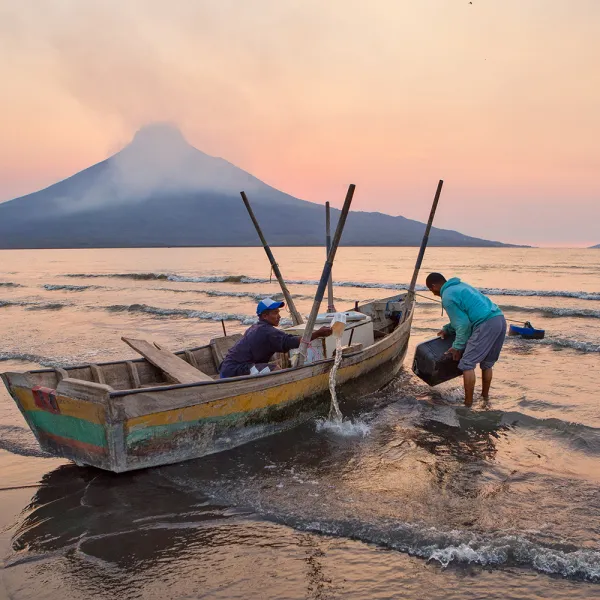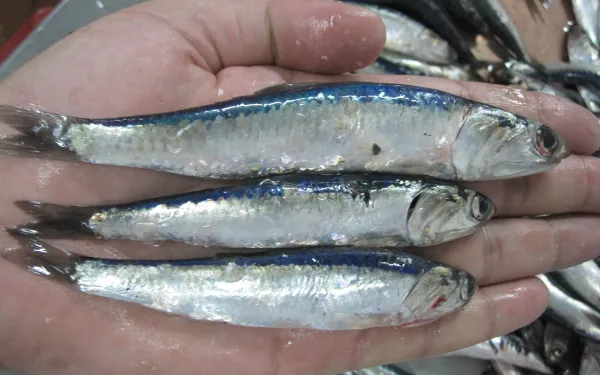
Project
ShutterstockTowards an end to subsidies that promote overfishing
Overfishing is one of the main problems for the health of our ocean. And the provision of negative subsidies to the fishing sector is one of the fundamental causes of overfishing.
Fishing subsidies are financial contributions, direct or indirect, that public entities grant to the industry.
Depending on their impacts, they can be beneficial when they promote the growth of fish stocks through conservation and fishery resource management tools. And they are considered negative or detrimental when they promote overfishing with support for, for example, increasing the catch capacity of a fishing fleet.
It is estimated that every year, governments spend approximately 22 billion dollars in negative subsidies to compensate costs for fuel, fishing gear and vessel improvements, among others.
Recent data show that, as a result of this support, 63% of fish stocks worldwide must be rebuilt and 34% are fished at "biologically unsustainable" levels.
Although negotiations on fisheries subsidies, within the framework of the World Trade Organization, officially began in 2001, it was not until the 2017 WTO Ministerial Conference that countries committed to taking action to reach an agreement.
This finally happened in June 2022, when member countries of the World Trade Organization reached, after more than two decades, a binding agreement to curb some harmful fisheries subsidies. It represents a fundamental step toward achieving the effective management of our fisheries resources, as well as toward ensuring global food security and the livelihoods of coastal communities.
The agreement reached at the 12th WTO Ministerial Conference provides for the creation of a global framework to reduce subsidies for illegal, unreported and unregulated fishing; subsidies for fishing overexploited stocks; and subsidies for vessels fishing on the unregulated high seas. It also includes measures aimed at greater transparency and accountability in the way governments support their fisheries sector.
The countries agreed to continue negotiating rules to curb other harmful subsidies, such as those that promote fishing in other countries' waters, overfishing and the overcapacity of a fleet to catch more fish than is sustainable.
If we want to have abundant and healthy fishery resources, it is time to change the way we have conceived fishing until now. We must focus our efforts on creating models of fishery use that allow for long-term conservation.
Partners:


The Odebrecht Tsunami: can we restore the public trust, or just the money?
(Column originally published in El País) Corruption in Latin American and the Caribbean is no longer news. Some even consider it normal. But this too has a limit. So when we learned of the extent of corruption involved with Brazilian multinational Odebrecht, the news hit like a tsunami: the corporation not only swept away huge piles of money, it also destroyed the public trust. Now we must question whether the more than 100 infrastructure projects involved in the Odebrecht case were really in the public interest, or if they were merely an excuse to pay millions in bribes. The details of this complex and corrupt machinery came to light on December 21. That day the Department of Justice and the US Attorney’s Office published a document in which corporate executives confessed to having paid roughly $788 million in bribes to officials in 11 Latin American countries and Mozambique. According to the document, “between 2001 and 2016, Odebrecht, together with its co-conspirators, knowingly and willfully conspired and agreed with others to corruptly provide hundreds of millions of dollars… for the benefit of foreign officials, foreign political parties, foreign political party officials, and foreign political candidates… in order to obtain and retain business…” It is a confession of actions that completely betray the public trust. The executives implicated dozens of governments, including heads of state (such as Colombian President and Nobel Prize-winner Juan Manuel Santos), ministers, senators, and others who are now being investigated or have been jailed. Indignation is rampant, as are demands for justice. Although it wasn’t possible to access the complete list of projects, public information in each country accounts for the following: Argentina: gas pipelines, water purification projects, potassium extraction, and the burial of the Sarmiento railway, among others. Brazil: hundreds of projects, including extractive industries and the Belo Monte Dam, which since its planning stages has been violating human rights. Colombia: the Ruta del Sol and the navigation of the Magdalena River, the two most important engineering projects in the country. Ecuador: the Manduriacu dam and the Pacific refinery. Although the administration of Rafael Correa has stated that possible bribes occurred before 2007, the US government claims to have evidence of later bribes. Mexico: the Ethylene XXI petrochemical project (the largest in Latin America) and the Los Ramones II Norte gas pipeline. Peru: the North-South Interoceanic Highway, the Alto Piura hydroelectric project, and the Lima electric train. Dominican Republic: the Punta Catalina thermoelectric plant and the Pinalito hydroelectric plant. In all countries, the bribes involve energy or infrastructure projects that were declared essential for development by governments, international agencies, and corporations. Yet communities and organizations have for decades denounced these same projects for abridging human rights, harming the environment, and aggravating climate change. The majority of their complaints about these projects were ignored. The Belo Monte Dam, for example, began operations despite the fact that the Inter-American Commission on Human Rights requested a halt to its construction and government protection of the rights of affected indigenous communities. Requests for justice were also repressed, sometimes by the very governments that, according to the evidence, were reportedly given bribes to implement the projects. The situation is all the more serious if we consider that Latin America is the most dangerous region in the world for human rights defenders, particularly those who protect the environment and their territory. Faced with unprecedented corruption, it is vital to analyze each of the projects from the Odebrecht case to determine its true public utility. It’s likely that, in many cases, the socio-environmental costs far outweigh the benefits. In such cases, damages must be penalized. The Odebrecht case may be just the tip of the iceberg in a broader regional problem. Each State and corporation on the continent must adopt effective anti-corruption measures and re-evaluate their project planning and implementation processes. One clear lesson from this scandal is that the region needs to strengthen the independent, objective fulfillment of national and international standards for the protection of the environment and human rights. In the case of mega-projects, transparency and the participation of those affected (and those interested in protecting the public interest) must be ensured. Given that, in some cases, the investigation of corruption rests with the administrations implicated in the scandal, independent regional citizen’s oversight should be established to investigate the impacts of the mega-projects, and the best ways to compensate for damages. We must ensure, once and for all, that decision-makers are truly serving the public interest, and not their own pocketbooks. All of us citizens must contribute to making this a reality. One thing you can do to help is support AIDA – the only regional organization of Latin American experts providing free legal support to secure the wellbeing of people, places, and the planet.
Read more
AIDA statement on the death of thousands of fish in Costa Rica
The recent mass die-off of anchovy—a species on which birds, marine mammals, and other fish depend for nutrition—must be analyzed in detail. Upon finding the cause, an integrated solution must be implemented at the national and regional levels. San José, Costa Rica. On February 15, thousands of anchovy washed onto the beaches of Puntarenas, two kilometers from the gulf of Nicoya. Experts from the National University of Costa Rica have ruled out algae-producing toxins and a red ride—which occurs from excessive proliferation of microalgae—as possible causes. At this point, authorities do not know why the fish died. The anchovy is a species that contributes greatly to the balance of the marine environment. Many species of birds and marine mammals, as well as other fish, depend on the anchovy as a vital source of nutritients and protein. Responding to the incident, Gladys Martínez, attorney with AIDA’s Marine Biodiversity and Coastal Protection Program, said: “It is vital that we analyze in detail the factors that may have caused this mass anchovy die-off. We have to determine what is affecting them and prevent a similar situation from happening again. Once the cause is found, a solution must be implemented that takes into account all components of the marine environment. “In addition, it is important that Costa Rica work both nationally and regionally on a comprehensive solution. Anchovy is a common species in the region and, although not highly migratory, it does move over short distances, warranting the involvement of surrounding nations as well.” Press contact: Gladys Martínez, AIDA, [email protected], +506 8321 4263
Read more16 Highlights of 2016: Year in Review
Thanks to the help of our partners and supporters, AIDA achieved many important advances in the defense of human rights and the environment in 2016.
Read more